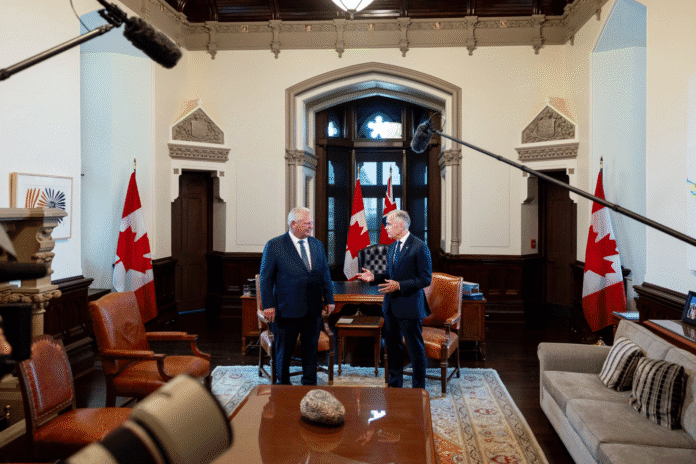Prime Minister Mark Carney and Ontario Premier Doug Ford sat down in Ottawa this week for a meeting that drew attention not for its announcements, but for its careful timing. With trade tensions rising between Canada and the United States, especially around steel, autos, and new tariffs, both leaders framed their talks as an opportunity to stay coordinated rather than chase headlines.
Carney signaled that his government’s priority is to focus on areas where Canada has direct control. He pointed to industries such as housing, steel, automotive manufacturing, and artificial intelligence as sectors that can strengthen resilience at home, even while international conditions remain uncertain. The emphasis reflects a strategy of building domestic strength before looking outward.
For his part, Premier Ford used the occasion to highlight Ontario’s concerns. He argued that tax relief and support for local producers could help soften the blow of U.S. tariffs. In particular, Ford suggested that Ontario-made steel, like that from Algoma, could be given a larger role in Canadian infrastructure projects. This would keep jobs secure, boost industry competitiveness, and reinforce supply chains.
The meeting produced no major policy announcements, but that was by design. Federal officials made clear that the session was about preparation and alignment, not quick fixes. Both leaders are facing busy legislative calendars this fall, and their cooperation will be critical in shaping responses to whatever shifts occur in cross-border trade.
The key takeaway is less about what was decided, and more about what the meeting represented: a united effort to focus on Canada’s strengths. In a global climate of economic volatility, Carney and Ford presented a front of stability, signaling that Canada’s leaders intend to work together to keep the economy strong, industries supported, and people reassured.















